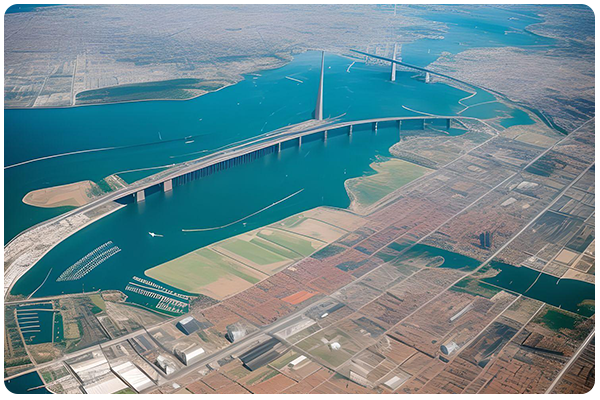How Location Intelligence software can help for Urban planning

- Introduction
Location intelligence software plays a vital role in urban planning by providing advanced geospatial analytics and insights. It leverages geographic information system (GIS) technology to collect, analyze, and visualize spatial data, enabling urban planners to make informed decisions for sustainable and efficient city development. Here are several ways in which location intelligence software can assist in urban planning:
- 1. Data Integration and Visualization
Location intelligence software allows for the integration of diverse datasets from various sources, such as satellite imagery, sensor networks, social media feeds, and public records. By visualizing this data on interactive maps and dashboards, urban planners gain a comprehensive view of the city's current state. They can identify patterns, trends, and relationships between different variables, such as population density, land use, transportation networks, and environmental factors.
- 2. Site Selection and Land Use Planning
Location intelligence software aids in identifying suitable sites for different purposes, such as residential, commercial, or industrial development. By overlaying data layers related to zoning regulations, infrastructure availability, transportation accessibility, and environmental constraints, urban planners can make informed decisions on land use allocation. This helps optimize the use of space, minimize environmental impact, and promote sustainable growth.
- 3. Transportation Planning and Traffic Management
Efficient transportation systems are critical for urban development. Location intelligence software provides valuable insights into traffic flows, congestion hotspots, and public transit usage. Planners can analyze this information to identify bottlenecks, optimize transit routes, and plan for future transportation infrastructure. By integrating mobility data with land use patterns, they can encourage multimodal transportation solutions, reduce commute times, and enhance overall connectivity.
- 4. Infrastructure Planning and Resource Allocation
Location intelligence software assists in planning and allocating resources for infrastructure development. Planners can analyze spatial data related to population density, demographic trends, and service gaps to identify areas that require new infrastructure, such as schools, healthcare facilities, and parks. By understanding the distribution of existing infrastructure, they can ensure equitable access to essential services and prioritize resource allocation based on community needs.
- 5. Environmental Planning and Sustainability
Location intelligence software facilitates the integration of environmental data into urban planning processes. Planners can analyze factors such as air quality, green spaces, and energy consumption to promote sustainability and mitigate the environmental impact of urban development. They can identify areas for tree planting, design energy-efficient buildings, and optimize waste management systems. This holistic approach helps create healthier and more sustainable cities.
- 6. Risk Assessment and Disaster Preparedness
Cities face various natural and man-made risks, including floods, earthquakes, and industrial accidents. Location intelligence software enables urban planners to assess and mitigate these risks by analyzing spatial data related to vulnerability, hazard exposure, and emergency response infrastructure. By identifying high-risk areas, they can develop evacuation plans, allocate resources effectively, and implement measures to enhance resilience.
- 7. Community Engagement and Participatory Planning
Location intelligence software facilitates community engagement and participatory planning processes. Planners can use interactive maps and visualizations to communicate proposed plans and solicit feedback from residents. This approach promotes transparency, inclusivity, and social equity in urban development. Citizens can provide input, voice concerns, and actively participate in decision-making processes, leading to more effective and community-centric urban plans.
- 8. Decision Support and Scenario Analysis
Location intelligence software provides decision support tools and scenario analysis capabilities. Planners can simulate different development scenarios, assess their impact on various factors, and compare the outcomes. This helps in evaluating trade-offs, understanding the consequences of different decisions, and selecting the most optimal urban planning strategies.
- Summary
In summary, location intelligence software plays a crucial role in urban planning by providing powerful geospatial analytics and visualization capabilities. By integrating diverse datasets, visualizing spatial data, and enabling advanced analysis, this software empowers urban planners to make data-driven decisions for sustainable, efficient, and inclusive city development.


